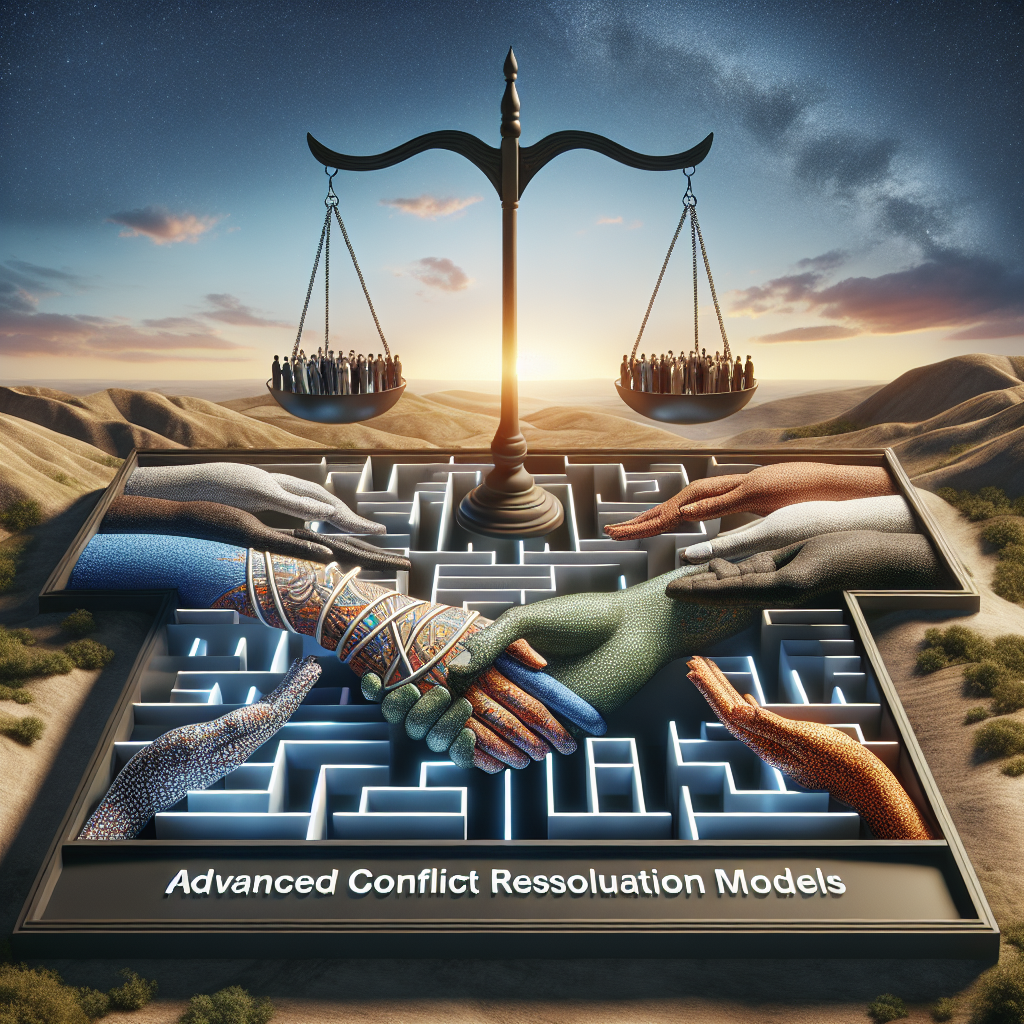Advanced Conflict Resolution Models
Master Conflict Resolution: Effective Strategies
Introduction
In any relationship, whether personal or professional, conflict is inevitable. It occurs when there is a disagreement or difference of opinion between two or more parties. While conflicts can be uncomfortable and stressful, they are also a natural part of human interaction and can lead to growth and positive change if handled effectively. However, unresolved conflicts can have detrimental effects on relationships and can even escalate into larger issues. In this article, we will explore the concept of conflict resolution, its importance, and advanced models and techniques that can help resolve conflicts in a more effective and constructive manner.
Understanding Conflict
Before diving into advanced conflict resolution models, it is important to have a basic understanding of what conflict is and why it occurs. Conflict can be defined as a disagreement or struggle between two or more individuals with incompatible goals, beliefs, or values. Conflict can arise due to various reasons, such as differences in opinions, communication styles, goals, or cultural backgrounds.
Conflict is a natural and inevitable part of human relationships. It can occur in any setting, whether personal or professional. While conflict is often seen as a negative aspect, it is important to note that not all conflicts are harmful. Healthy and constructive conflicts can lead to growth, increased understanding, and improved relationships.
Impact of Unresolved Conflict
While some conflicts can be resolved easily, others may require more effort and advanced techniques. When conflicts are left unresolved, they can have negative consequences on individuals, relationships, and even organizations. Unresolved conflicts can lead to resentment, hostility, and a breakdown of communication between parties. This can ultimately result in damaged relationships, reduced productivity, and a toxic work environment.
Factors Contributing to Conflict
Conflicts can arise due to various factors, and it is essential to identify and understand these factors to effectively resolve them. Some common factors that contribute to conflict include:
- Differences in opinions, beliefs, or values
- Ineffective communication
- Power imbalances
- Unmet needs or expectations
- Cultural or generational differences
Importance of Effective Conflict Resolution
In today’s fast-paced and interconnected world, conflicts are bound to happen. Therefore, it is crucial to have effective conflict resolution skills to navigate these conflicts in a positive and productive manner. Effective conflict resolution can lead to several benefits, including:
- Improved relationships
- Increased understanding and empathy
- Enhanced problem-solving skills
- Higher levels of trust and respect
- Reduced stress and tension
Identifying the Root Cause of Conflict
In order to resolve conflicts effectively, it is important to identify the root cause of the conflict. This can help parties understand each other’s perspectives and find a mutually beneficial solution. Some common methods for identifying the root cause of conflict include:
- Active listening: Listening to the other party without judgment and trying to understand their perspective.
- Reflective questioning: Asking open-ended questions to gain more insight into the other party’s thoughts and feelings.
- Mediation: Involving a third-party mediator to facilitate communication and help parties identify the root cause of the conflict.
Communicating Effectively During Conflict
Effective communication is crucial in resolving conflicts. It involves expressing oneself clearly and actively listening to the other party. Some tips for effective communication during conflicts include:
- Use “I” statements instead of “you” statements.
- Avoid blaming or accusing the other party.
- Be specific and provide examples instead of speaking in general terms.
- Practice active listening by paraphrasing and summarizing the other party’s points.
Utilizing Active Listening Skills
Active listening is a powerful tool in conflict resolution. It involves fully engaging and focusing on what the other party is saying without distractions. Some techniques for active listening include:
- Making eye contact and maintaining an open posture.
- Paraphrasing and summarizing the other party’s points to ensure understanding.
- Asking clarifying questions to gain more insight into the other party’s perspective.
- Avoiding distractions, such as phones or other interruptions.
Implementing Collaborative Problem-Solving Techniques
Collaborative problem-solving involves working together to find a mutually beneficial solution to the conflict. It requires a willingness to compromise and understand the other party’s needs and concerns. Some techniques for collaborative problem-solving include:
- Brainstorming: Generating multiple solutions without judgment or criticism.
- Compromise: Finding a solution that satisfies both parties’ needs to some extent.
- Win-win negotiation: Finding a solution that fully satisfies both parties’ needs.
- Consensus building: Reaching an agreement through open and respectful communication.
Benefits of Using Effective Conflict Resolution Strategies for Better Relationships and Increased Productivity
In conclusion, conflicts are a natural part of human interaction, and they can lead to growth and positive change if handled effectively. It is important to understand the factors contributing to conflict and identify the root cause to find a mutually beneficial solution. Effective communication, active listening, and collaborative problem-solving techniques can help resolve conflicts and lead to improved relationships and increased productivity. By using these advanced conflict resolution models, individuals and organizations can create a more positive and harmonious environment for all parties involved.




